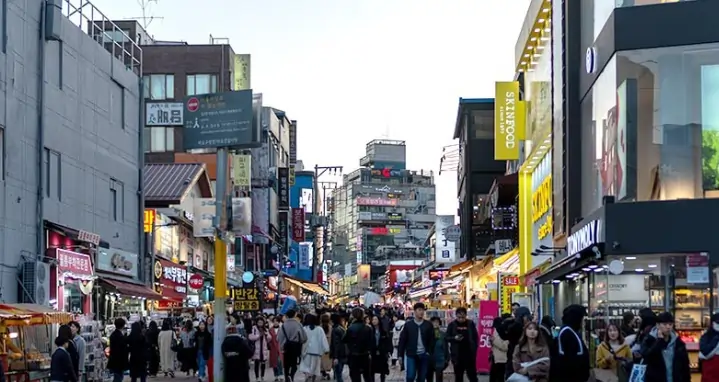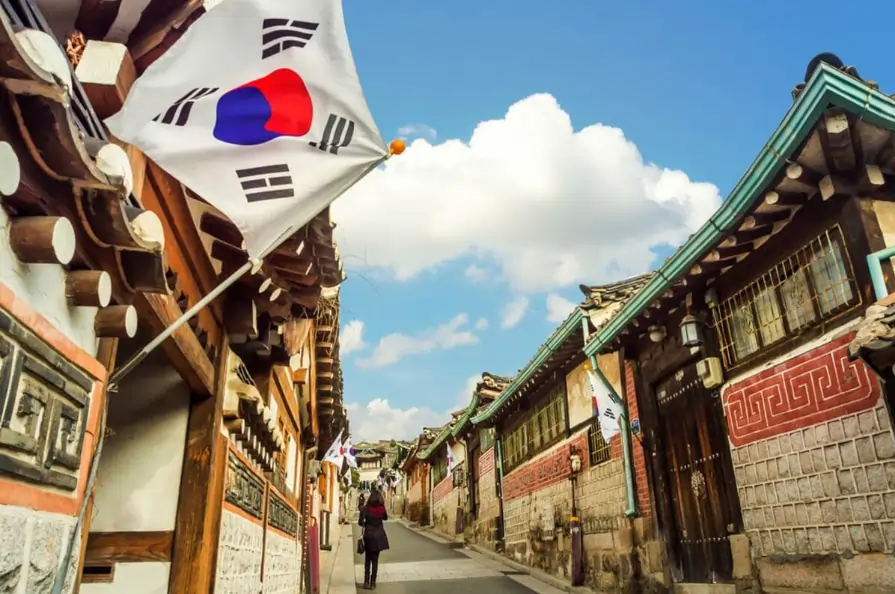
South Korea’s tourism sector has always been a vibrant contributor to the nation’s economy, but 2024 is shaping up to be a truly remarkable year. Fueled by a post-pandemic recovery, the country is experiencing significant growth across various indicators, including economic contribution, job creation, and visitor spending.
This growth is not just the result of a global rebound in travel but also a testament to the strategic efforts by the South Korean government to position tourism as a key driver of economic development.
A Record-Breaking Year for South Korea’s Tourism Economy
According to the World Travel & Tourism Council’s (WTTC) 2024 Economic Impact Research (EIR), South Korea’s tourism sector is expected to contribute a staggering ₩96.2 trillion to the national economy in 2024, representing a 13.6% year-on-year increase.
This marks a historic high for the sector, reflecting the significant role that tourism plays in South Korea’s broader economic landscape. In fact, the tourism industry will account for 4.3% of the country’s total GDP this year.

This resurgence is fueled by the recovery of both international and domestic tourism. In 2023, South Korea’s tourism sector already showed signs of a robust rebound, contributing ₩84.71 trillion to the national economy, an 18.2% increase from the previous year.
However, 2024 has outpaced even these impressive numbers as both international and domestic travelers flock to South Korea’s shores, eager to experience its vibrant culture, modern cities, and picturesque landscapes.
Job Creation and Employment Growth
One of the most notable impacts of the tourism sector’s growth is its role in job creation. Employment in South Korea’s tourism sector is expected to surpass 1.4 million jobs in 2024, highlighting the sector’s role as a cornerstone of the national workforce.
This is an impressive achievement, given that just a year earlier, the sector supported 1.34 million jobs.
The WTTC’s projections for 2024 emphasize tourism’s critical role in economic stability and job creation in the country, making it one of the most vital industries for sustaining livelihoods.
Tourism-driven employment is expected to continue growing in the coming decade. The WTTC forecasts that by 2034, the sector will generate over 1.8 million jobs, accounting for nearly 6.8% of all jobs in South Korea.
This growth underscores tourism’s long-term importance in driving employment and supporting the country’s economic health.
The Resurgence of International Visitor Spending
Visitor spending is a key driver of tourism’s economic contribution, and 2024 is expected to see significant growth in this area. International visitor spending is forecasted to reach ₩31.9 trillion, reflecting a 31.2% increase from 2023 levels.
This brings international visitor spending back to its pre-pandemic levels from 2019, an impressive recovery that highlights the global appetite for travel to South Korea.
This resurgence in international visitor spending is driven by tourists from various regions, particularly from Singapore and the United States, where visitor numbers have already surpassed pre-pandemic levels.
In the first four months of 2024 alone, South Korea welcomed 4.866 million foreign visitors, an 86.9% increase from the same period in 2023.
Tourists from Singapore and the U.S. led this recovery, with visitor numbers increasing by 54.7% and 19.5%, respectively, from pre-pandemic levels.
While China and Japan, traditionally South Korea’s top two sources of inbound tourists, have seen a slower recovery, their visitor numbers have still grown significantly compared to last year.
Chinese and Japanese tourist arrivals reached 78.1% and 82.5% of pre-pandemic levels, representing a substantial 470% and 85.7% increase from the same period in 2023.
These numbers indicate that the return of Chinese and Japanese tourists will further bolster South Korea’s international visitor spending in 2024.
Domestic Tourism’s Role in Economic Growth
In addition to the recovery in international tourism, domestic tourism is playing an equally vital role in driving economic growth.
Domestic visitor spending is projected to reach nearly ₩35.5 trillion in 2024, a 7.2% increase from 2019 levels and a 3% growth compared to 2023.
South Koreans are increasingly exploring their own country, and this trend is helping to boost the national economy.

Domestic tourism not only contributes to the overall economic output but also helps stabilize the tourism industry during periods of global uncertainty.
As the pandemic demonstrated, a strong domestic tourism market can serve as a crucial buffer during global disruptions. South Korea’s tourism industry has successfully capitalized on this dynamic, encouraging more domestic travel through various government initiatives, including promoting regional tourism and enhancing transportation and infrastructure.
Government Initiatives and the 2023-2024 Visit Korea Program
The South Korean government’s commitment to tourism as a pillar of economic growth is evident in its recent policies and initiatives. One such initiative is the “South Korea Tourism Export Innovation Strategy,” which aims to attract 20 million foreign tourists and achieve ₩32.3 trillion in tourism revenue by the end of 2024.
This ambitious target is part of the broader 2023–2024 Visit Korea initiative, which focuses on improving the country’s tourism infrastructure and amenities.
The government has implemented several key measures to enhance the visitor experience, including expanding the group e-visa fee waiver, increasing the limits for immediate tax refunds on duty-free purchases, and improving transportation booking services and payment methods.
These efforts are designed to make South Korea a more accessible and attractive destination for international tourists while also encouraging domestic travel.
In addition, the government is focusing on promoting regional tourism, which has historically been underutilized compared to the more well-known urban centers like Seoul and Busan.
By developing lesser-known destinations and improving the overall tourism infrastructure, South Korea aims to distribute the economic benefits of tourism more evenly across the country.
This will not only enhance the visitor experience but also create new opportunities for local businesses and communities in these regions.
Cultural Appeal and K-Pop’s Global Influence
South Korea’s tourism boom is also being driven by the global popularity of Korean pop culture, particularly K-pop, K-dramas, and Korean films. These cultural exports have significantly boosted South Korea’s profile as a premier destination for travelers worldwide.
Fans of K-pop and Korean dramas flock to the country to visit iconic locations featured in their favorite shows and films, attend concerts, and immerse themselves in the culture that has captivated global audiences.

The South Korean government has been quick to leverage this global cultural appeal by developing tourism packages and experiences that cater to international fans.
For example, visitors can take guided tours of popular filming locations, attend K-pop events, and even take part in cultural experiences that allow them to learn more about traditional Korean customs and practices.
This fusion of modern pop culture and traditional heritage creates a unique and compelling offering for international tourists.
Long-Term Outlook for South Korea’s Tourism Industry
Looking ahead, the WTTC forecasts that South Korea’s tourism sector will continue to grow over the next decade. By 2034, the sector’s annual GDP contribution is expected to reach ₩130.9 trillion, accounting for nearly 5% of the national economy.
This growth will be driven by both international and domestic tourism, as well as continued government investment in the sector. The future of South Korea’s tourism industry looks bright, with employment in the sector expected to exceed 1.8 million jobs by 2034.
This will make tourism one of the most important industries in the country, supporting a significant portion of the national workforce and contributing to the overall economic stability of the country.
Conclusion
South Korea’s tourism sector is on track for a record-breaking year in 2024, with significant growth in its economic contribution, employment, and visitor spending. The sector’s remarkable recovery from the pandemic is a testament to the resilience and strategic planning of both the government and the industry.
As international and domestic tourism continues to flourish, South Korea is solidifying its position as a premier global destination, with a vibrant tourism industry that plays a crucial role in driving economic growth.
With the government’s ongoing commitment to enhancing tourism infrastructure and promoting the country’s unique cultural offerings, South Korea’s tourism sector is poised for continued success in the years to come.
Whether through the allure of K-pop or the natural beauty of its landscapes, South Korea is attracting visitors from around the world, and the economic benefits of this growth will be felt across the nation.
Visit us at: chikaminute.com


